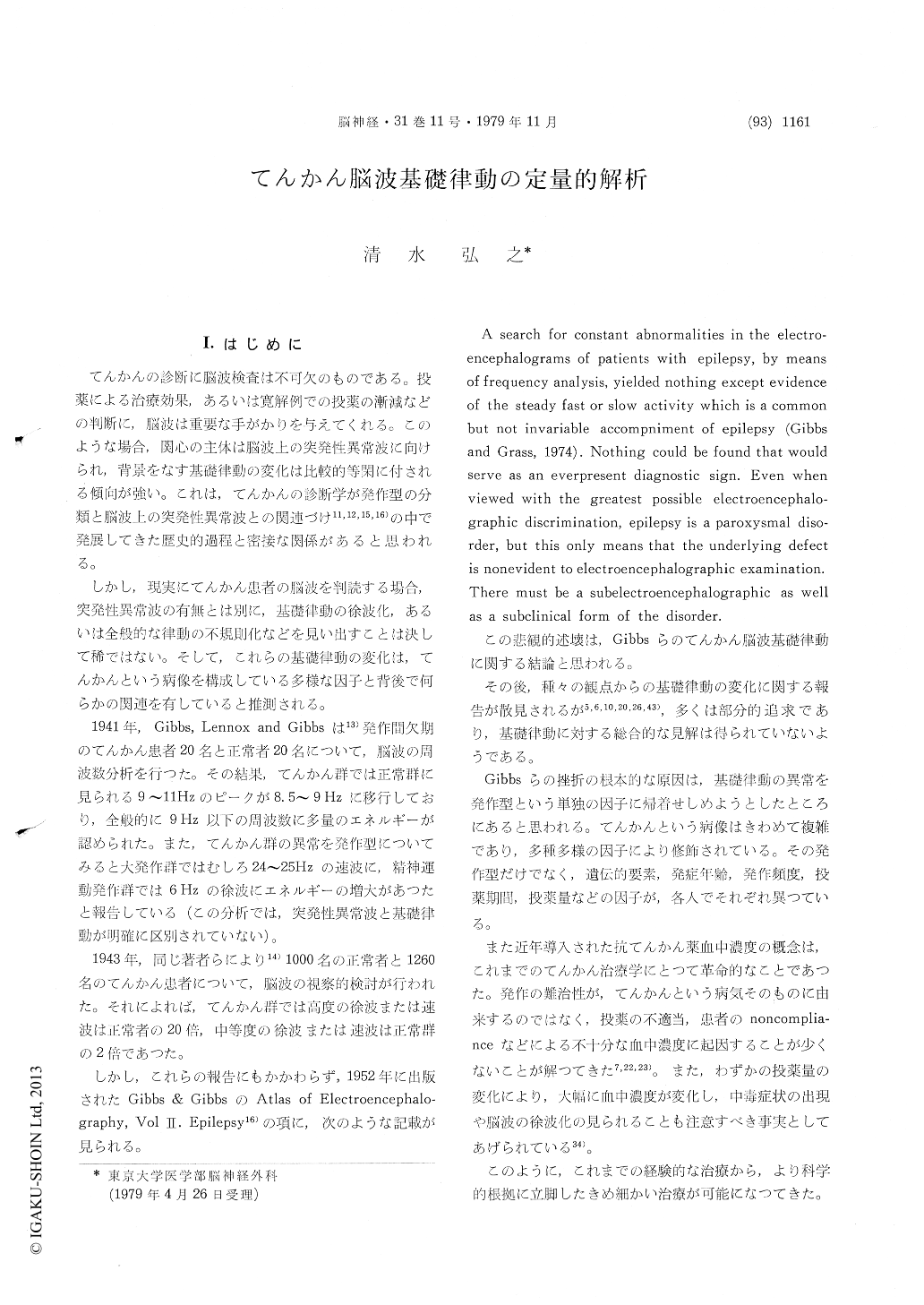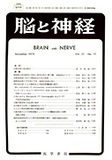Japanese
English
- 有料閲覧
- Abstract 文献概要
- 1ページ目 Look Inside
I.はじめに
てんかんの診断に脳波検査は不可欠のものである。投薬による治療効果,あるいは寛解例での投薬の漸減などの判断に,脳波は重要な手がかりを与えてくれる。このような場合,関心の主体は脳波上の突発性異常波に向けられ,背景をなす基礎律動の変化は比較的等閑に付される傾向が強い。これは,てんかんの診断学が発作型の分類と脳波上の突発性異常波との関連づけ11,12,15,16)の中で発展してきた歴史的過程と密接な関係があると思われる。
しかし,現実にてんかん患者の脳波を判読する場合,突発性異常波の有無とは別に,基礎律動の徐波化,あるいは全般的な律動の不規則化などを見い出すことは決して稀ではない。そして,これらの基礎律動の変化は,てんかんという病像を構成している多様な因子と背後で何らかの関連を有していると推測される。
Basic rhythms of EEG were quantitatively analyzed in 92 adult idiopathic epileptic patients and in 57 age-matched control subjects. Epileptic patients have been administered one or both of anticonvulsants, phenobarbital (PB) and diphenyl-hydantoin (DPH). Before the EEG study, blood samples were taken from patients and serum concentration of PB and DPH was examined with UV method. Dose and serum level correlation was statistically significant in both drugs but fairly inferior in DPH.
Dominant posterior rhythms in awake subjects were restored in a medical computer. These data were transformed with a Fast Fourier method into amplitude spectra, which were expressed in percentage distribution of each frequency band, i. e. delta (1.0-3.5 Hz), theta (4.0-7.5), alpha (8.0-12.5) and beta activity (13.0-29.5 Hz).
As the first result, it was found that slow wave activity significantly increased and alpha activity decreased in epileptics compared with control subjects. No difference was found in beta activity.
So as the next step, the etiologies of abnormal slowness of epileptic EEG were investigated inrelation to serum level of anticonvulsants, age of seizure onset, seizure frequency, duration of medi-cation and seizure types. These analysis confirmed that slowing of epileptic EEG has statistically significant correlation with the following factors,
1) high serum level of anticonvulsants (PB>20 ug/ml, DPH>15ug/ml)
2) high frequency of seizures (more than once per month)
3) seizure onset at young ages (0-5yrs.)
4) psychomotor seizure type.
When these slowing factors are plurally involved in one patients, the degree of EEG slowness in-creased in proportion to the numbers of thesefactors.
On the other hand, if the comparison was made between epileptics without these factors and control subjects, strikingly no minimum difference was found in basic rhythms.
This result induces the very important conclusion that epilepsy itself has no direct effect on slowing of basics rhythms and if there exists slowing, some secondary reasons must be searched.
The author also speculated pathogenetic causes of EEG slowing by these factors and insisted that there exist very close interrelation between basic EEG rhythms and prognosis of epilepsy.

Copyright © 1979, Igaku-Shoin Ltd. All rights reserved.


